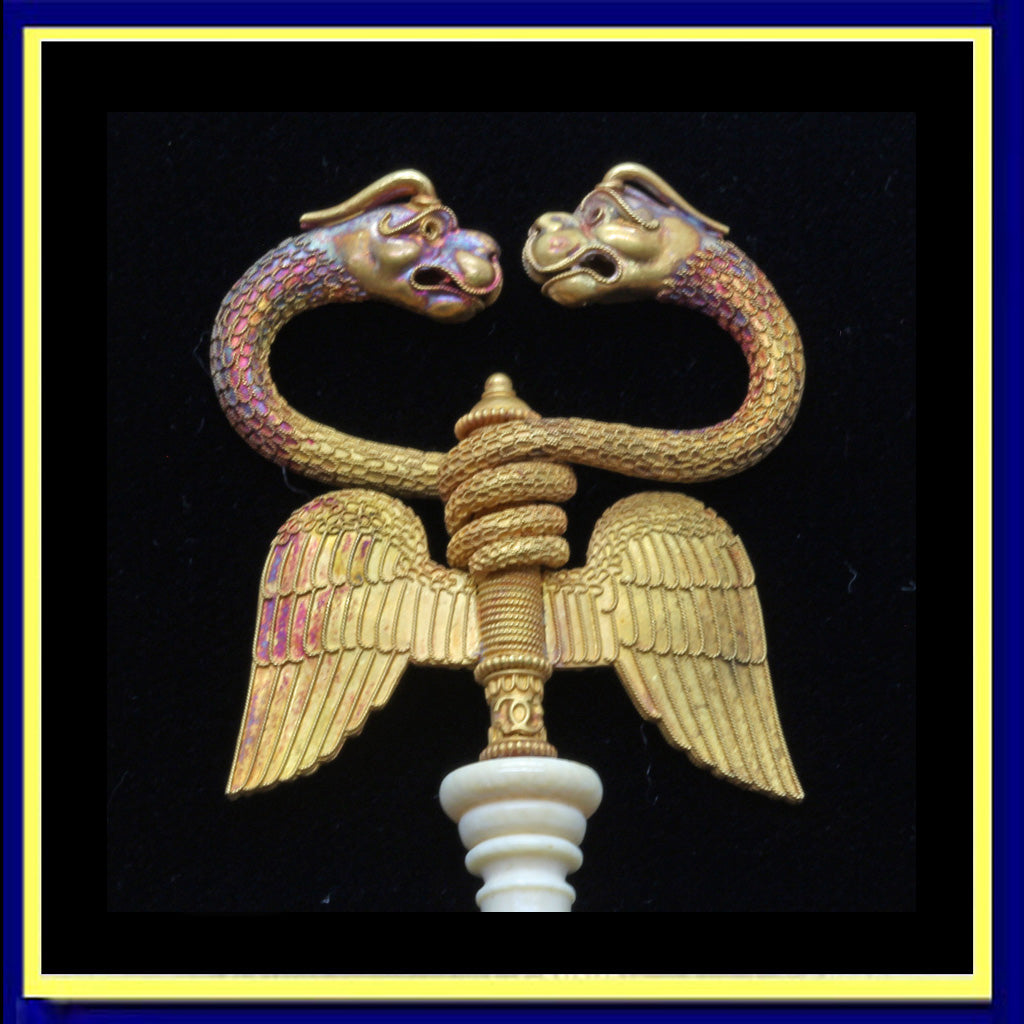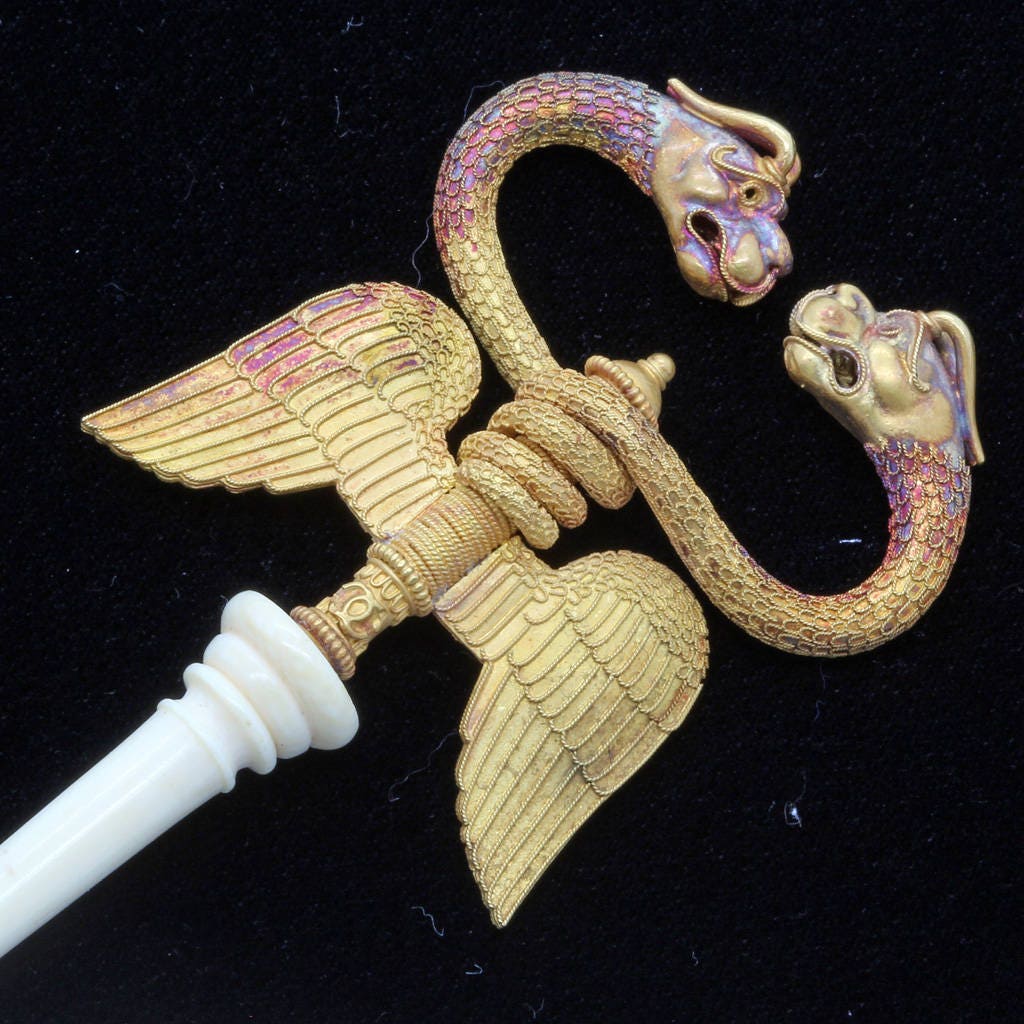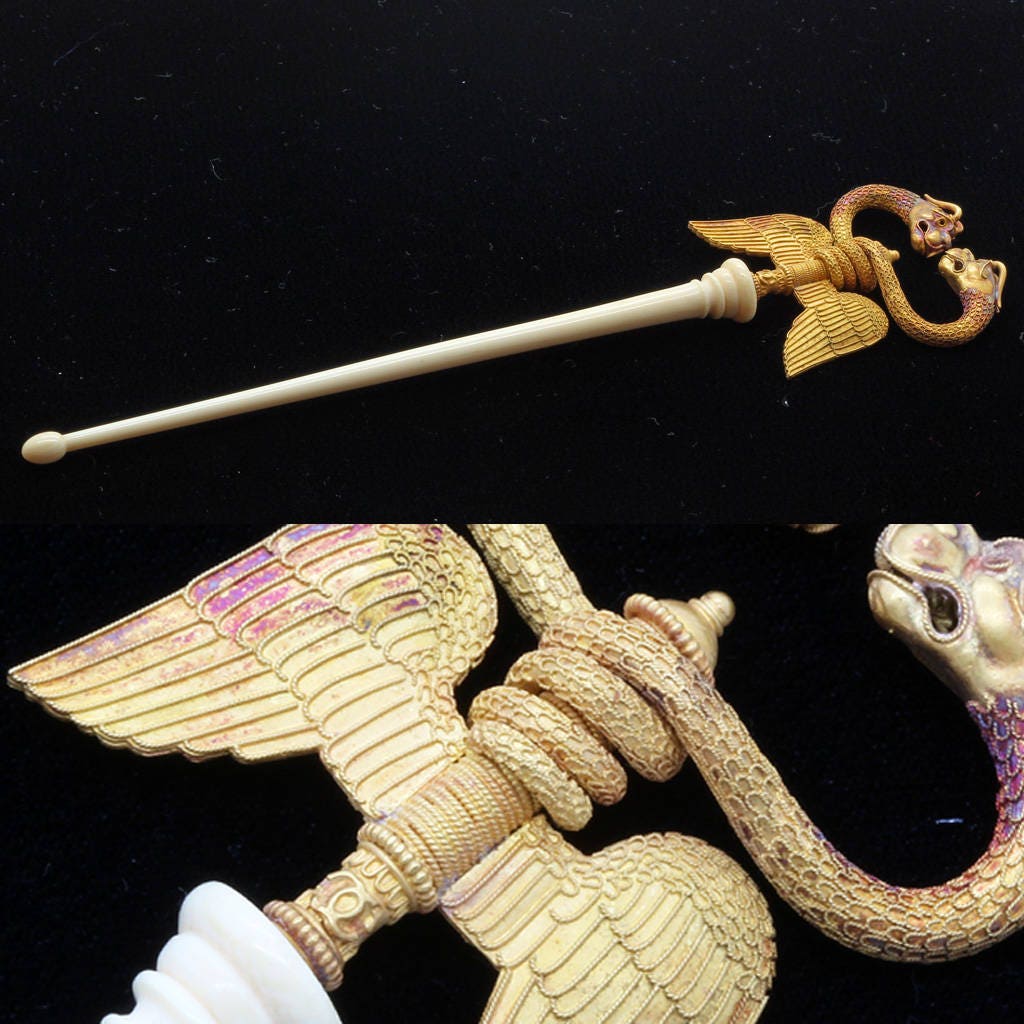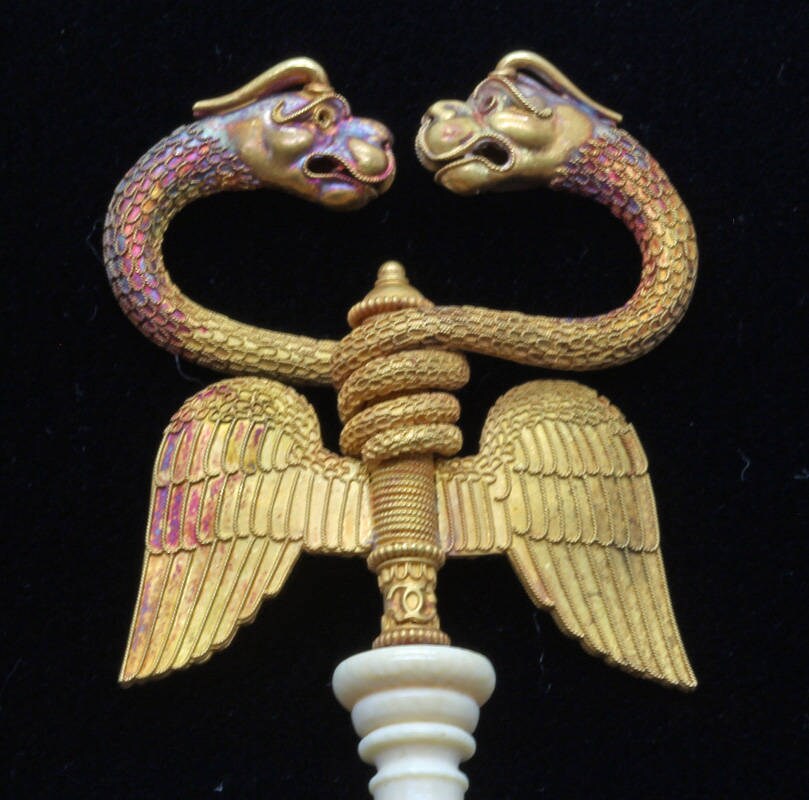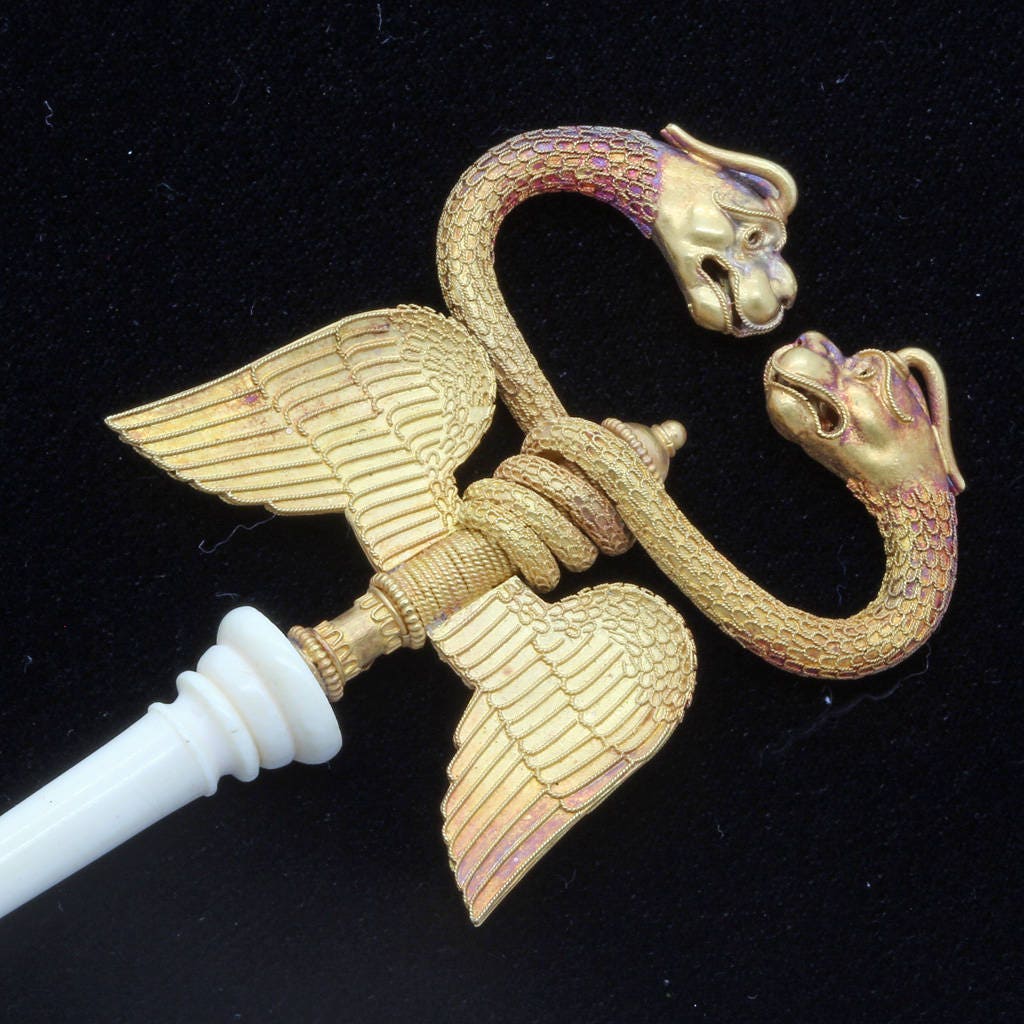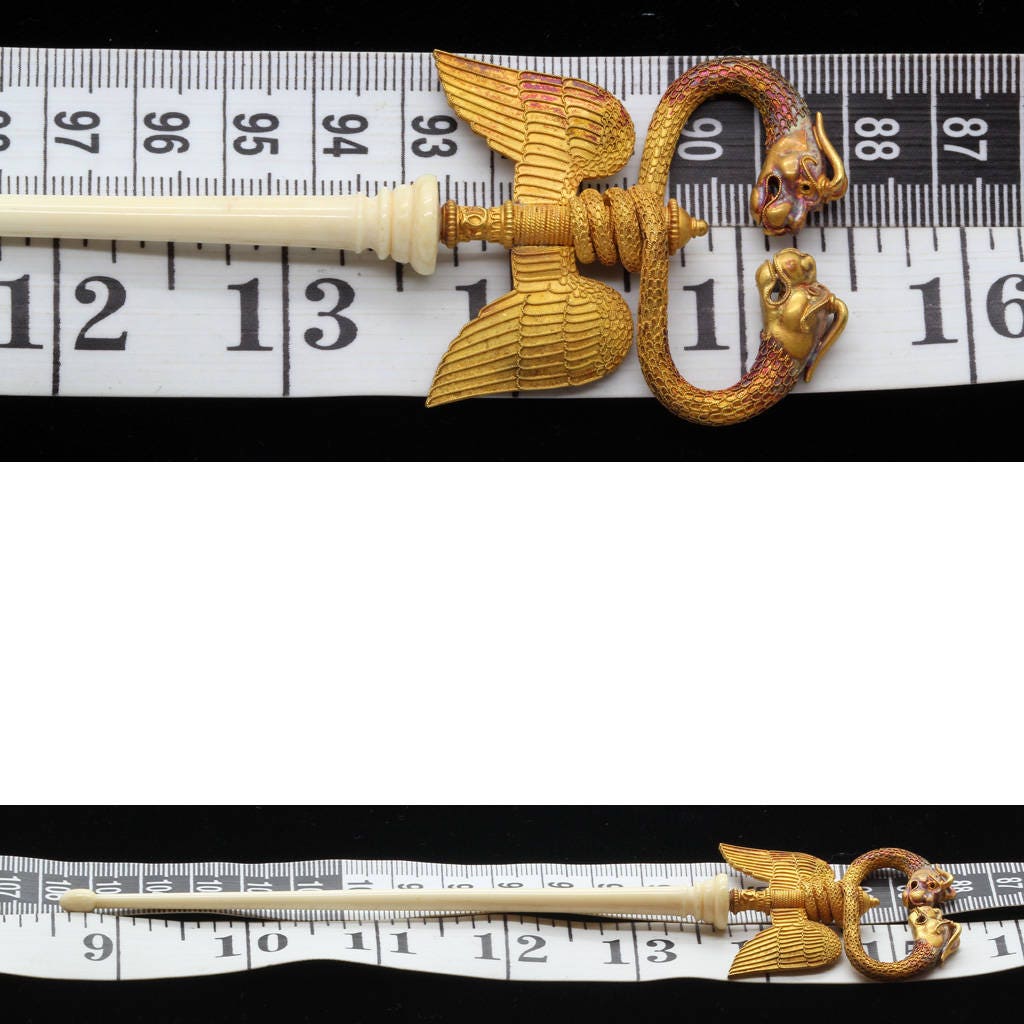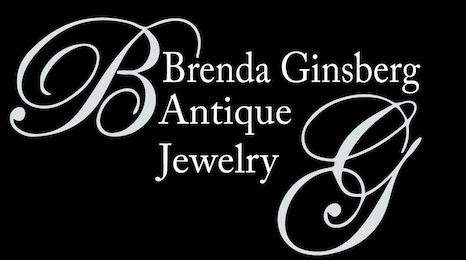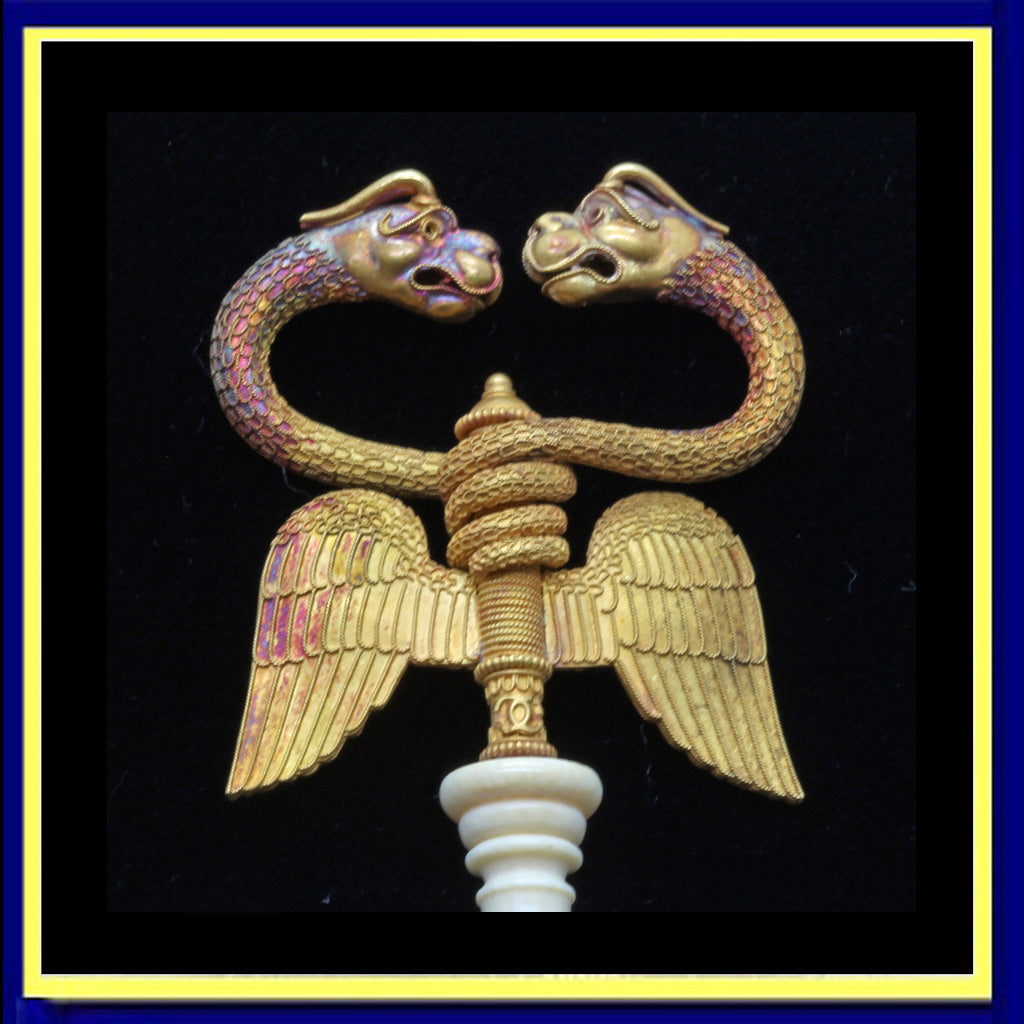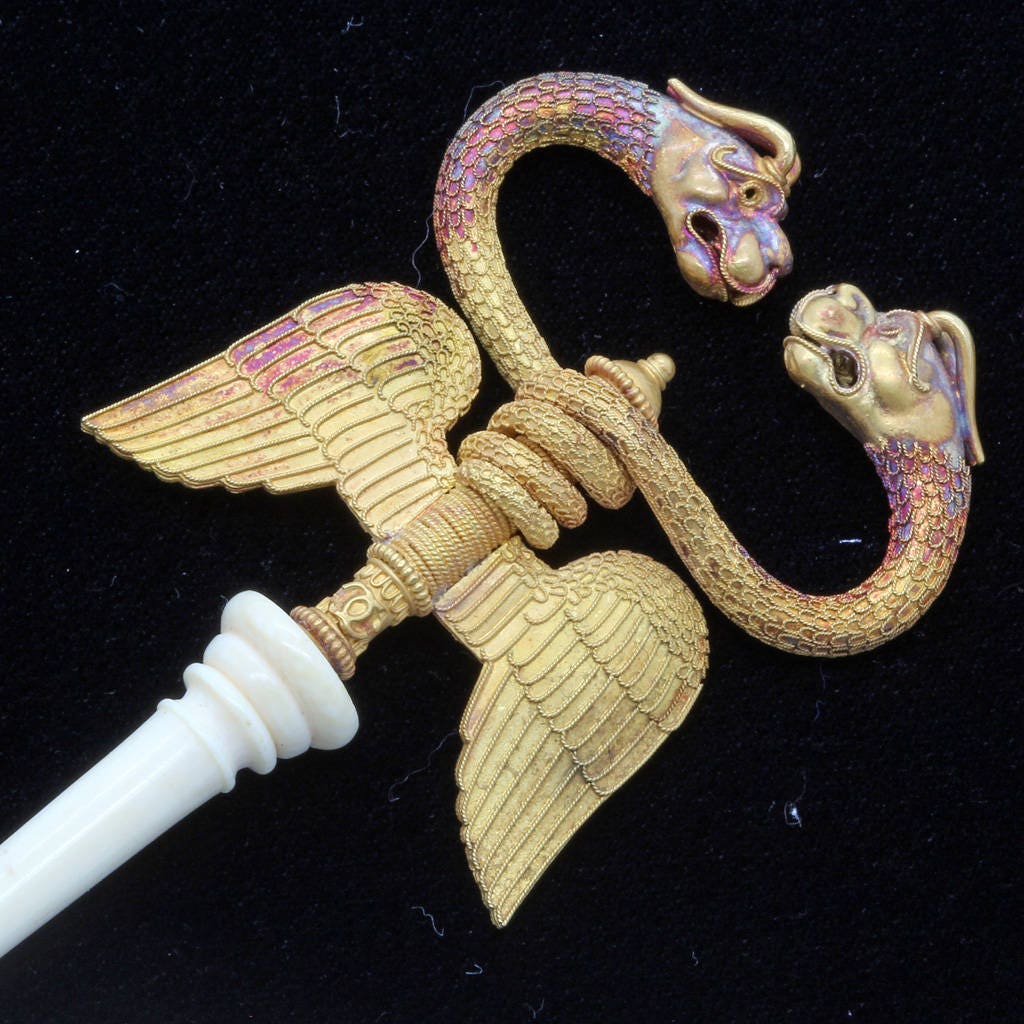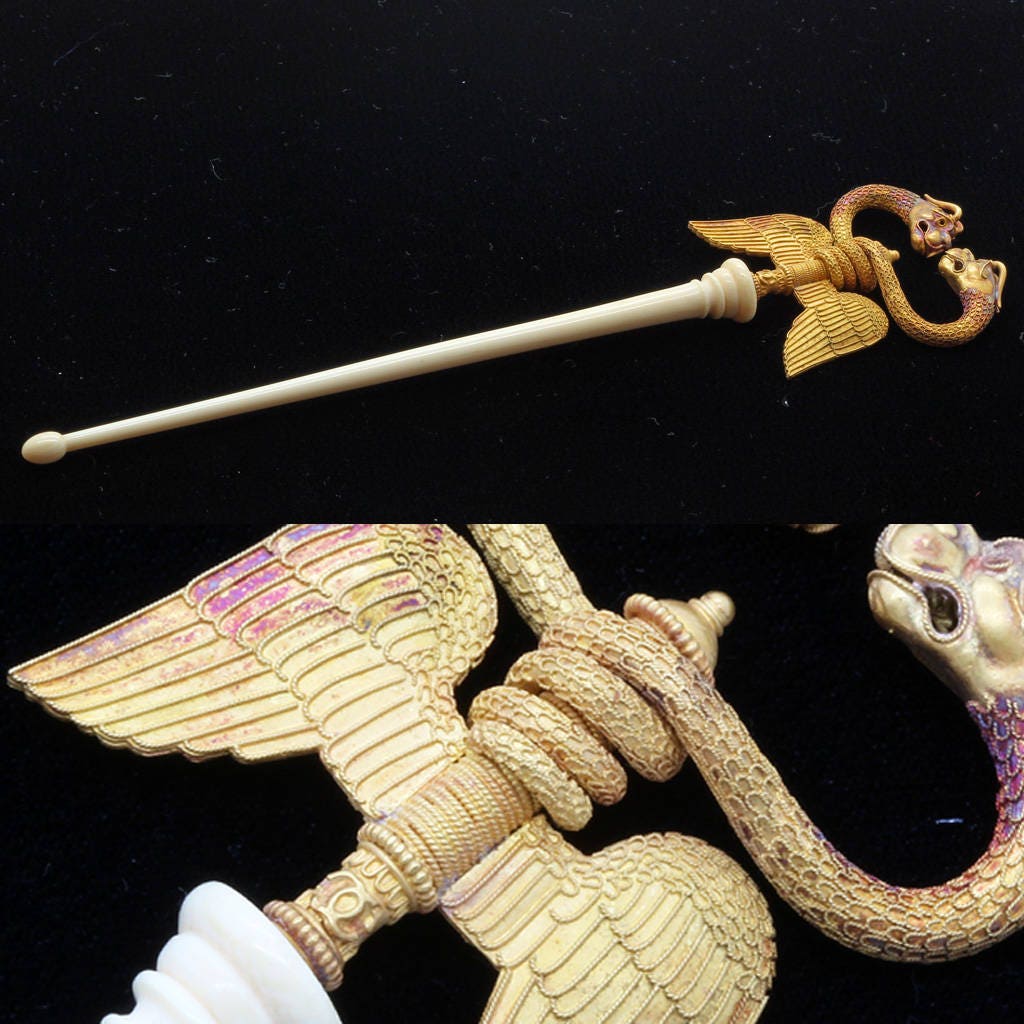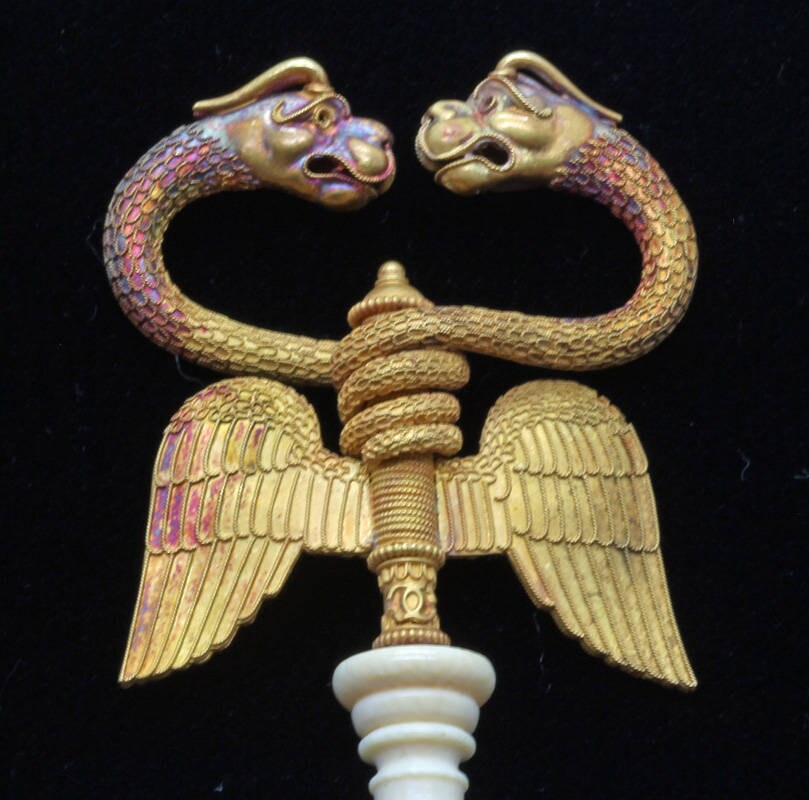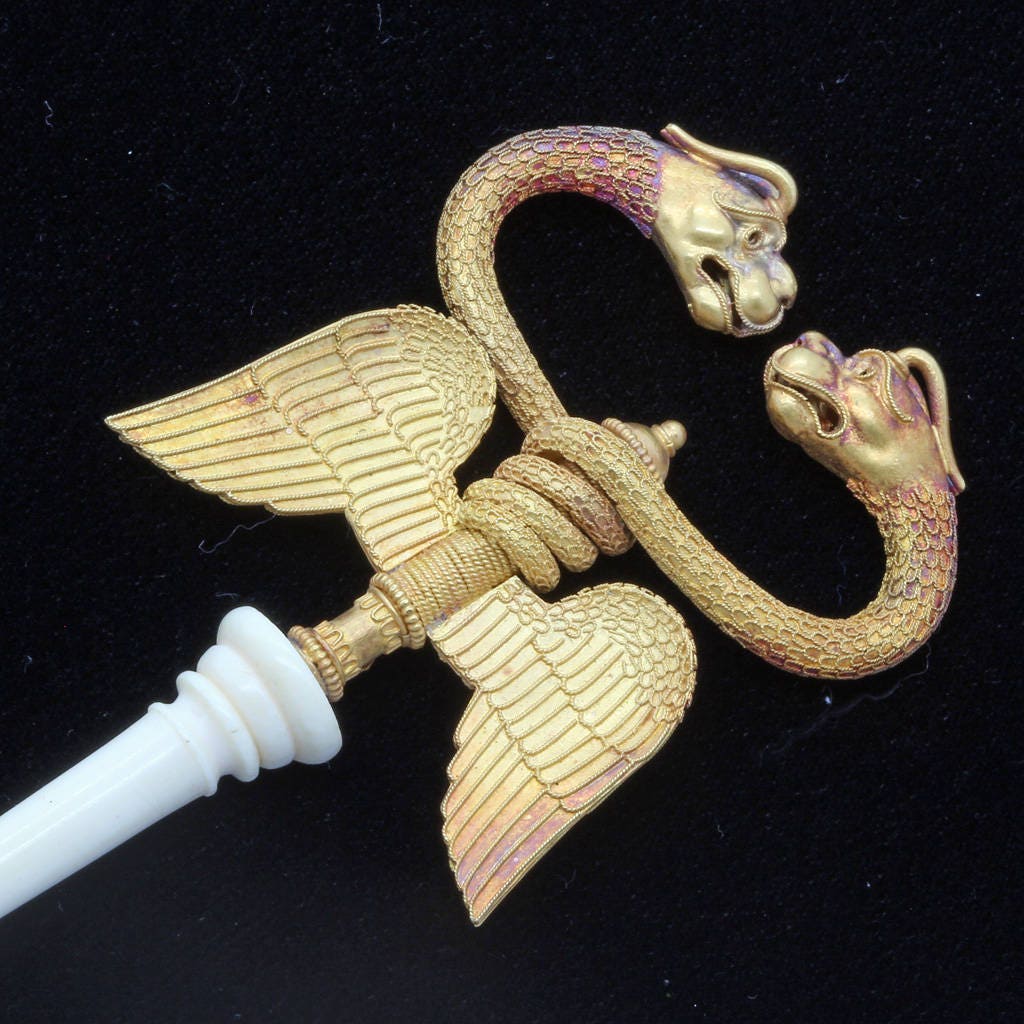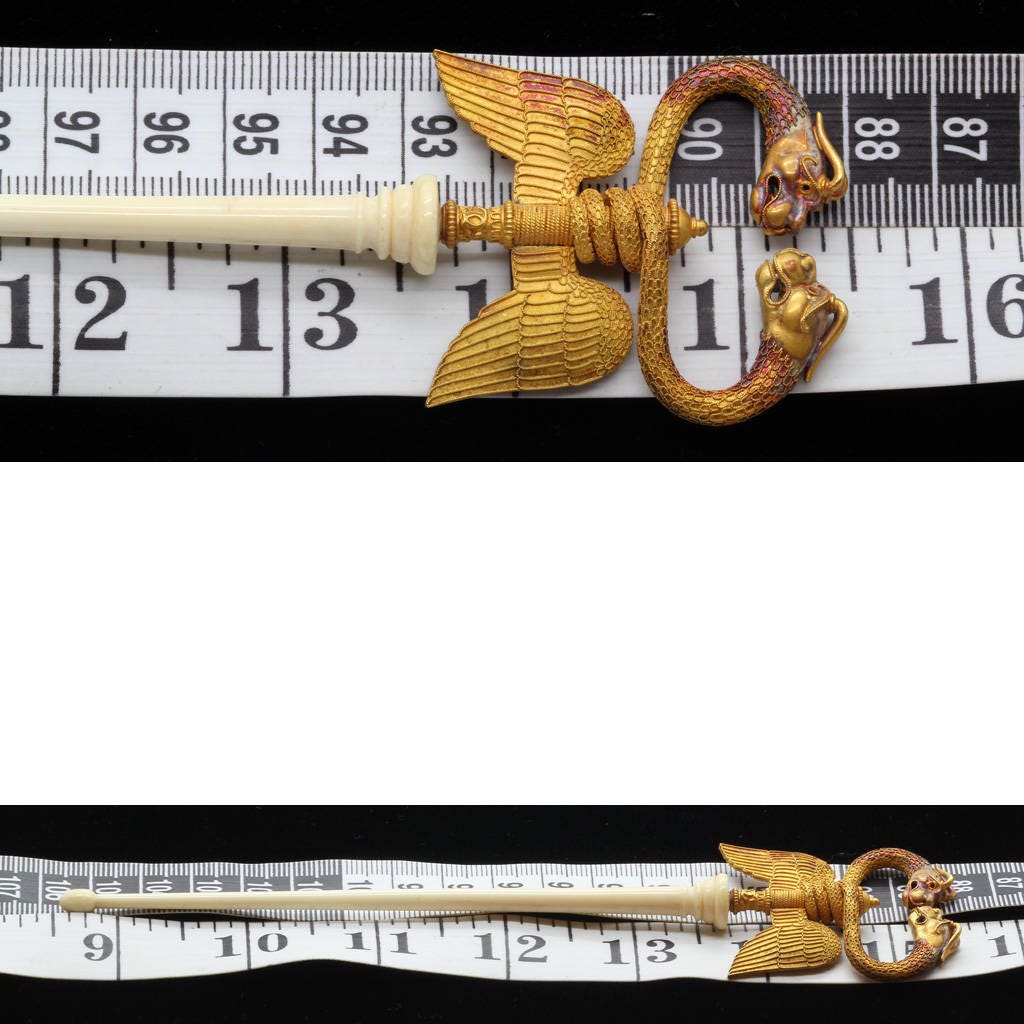Brenda Ginsberg Antiques & Jewelry
Castellani Caduceus Hairpin Snakes Dragons Wings Gold Filigree (6164)
Castellani Caduceus Hairpin Snakes Dragons Wings Gold Filigree (6164)
Couldn't load pickup availability
Antique Archaeological Revival Neo Etruscan hairpin. High carat gold. Made by Castellani, 2nd half 19th century - circa 1875. Rome Italy.
Measurements: Approximately 7 inches (just under 18cm) long. Weighs approx 19 grams.
Description: Long pin with capitol, architectural top tapering to the opposite side and ending in a bud-like terminal. The top of the column is attached to a caduceus - symbol of doctors and medicyne taken from the Ancient Greeks. A pair of twisting serpents snake and coil around one another, entwined around a gold pillar and flanked by a pair of highly detailed wings. The heads of the serpents are dragons, fully sculpted in relief. Tremendous detail to the gold work. The snakes are slightly mobile. All surfaces are very richly embellished with rope-twist filigree of exquisite detail. Modelled dragon heads are superb. All of these symbols and details are part of what made the Castellani family so famous and their work so highly sought after even during their own times. The quality of the work is exceptional, the archaeological themes clearly echo the Ancient Greeks, Romans and Etruscans as does the naturalistic animal symbolism.
Marks: Mirror 'C's are the Castellani family mark used by Fortunato Pia and Augusto Castellani. We will not acid test the gold as we do not wish to impact this work of art in any way or form. The high carat gold of the Castellani is well recognised and established.
Condition: good with negligible wear commensurate with age. Please see enlarged pictures and don't hesitate to ask questions which we will do our best to answer. While extremely rare, this hairpin can be seen in the book on Castellani by Weber Soros and Walker - page 186. Furthermore, they show the actual molds used to create the heads in the same book. Similar pins found in the Smithsonian and Victorian and Albert Museums.
